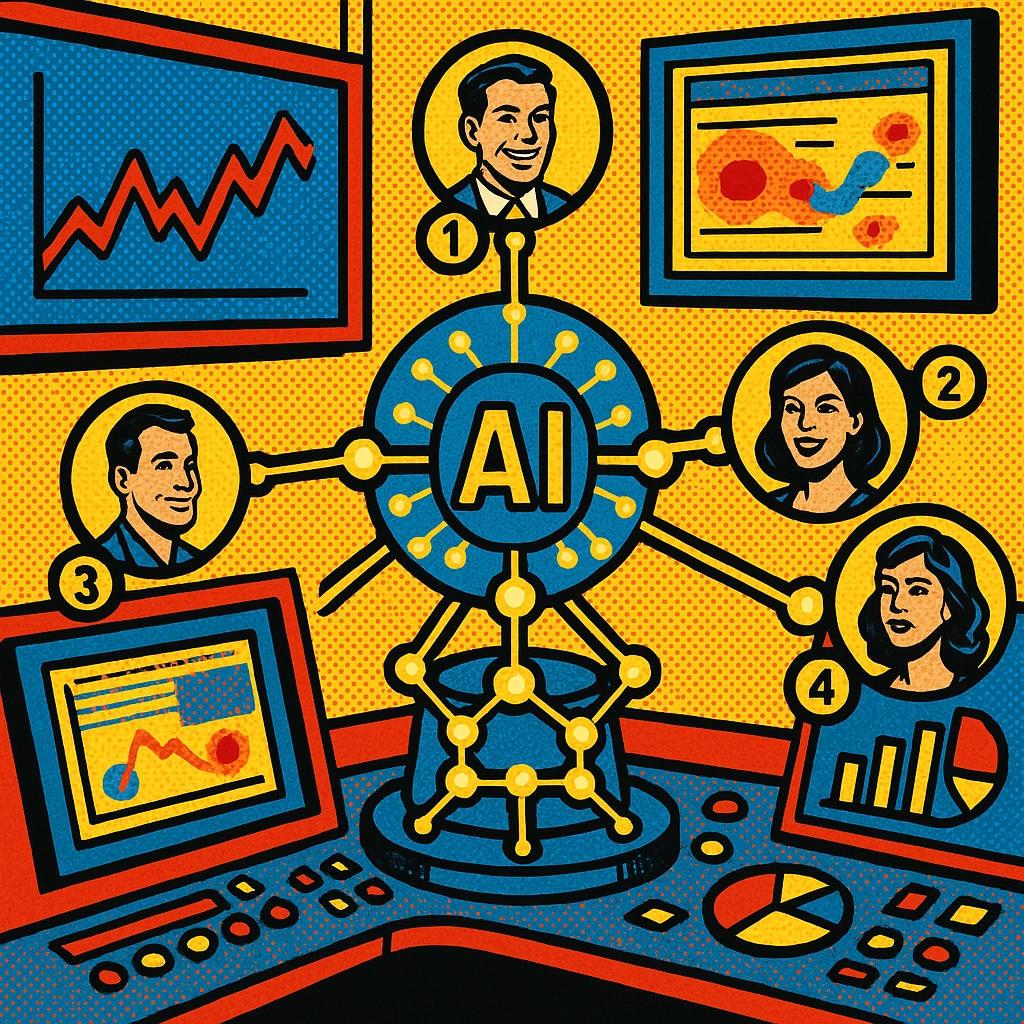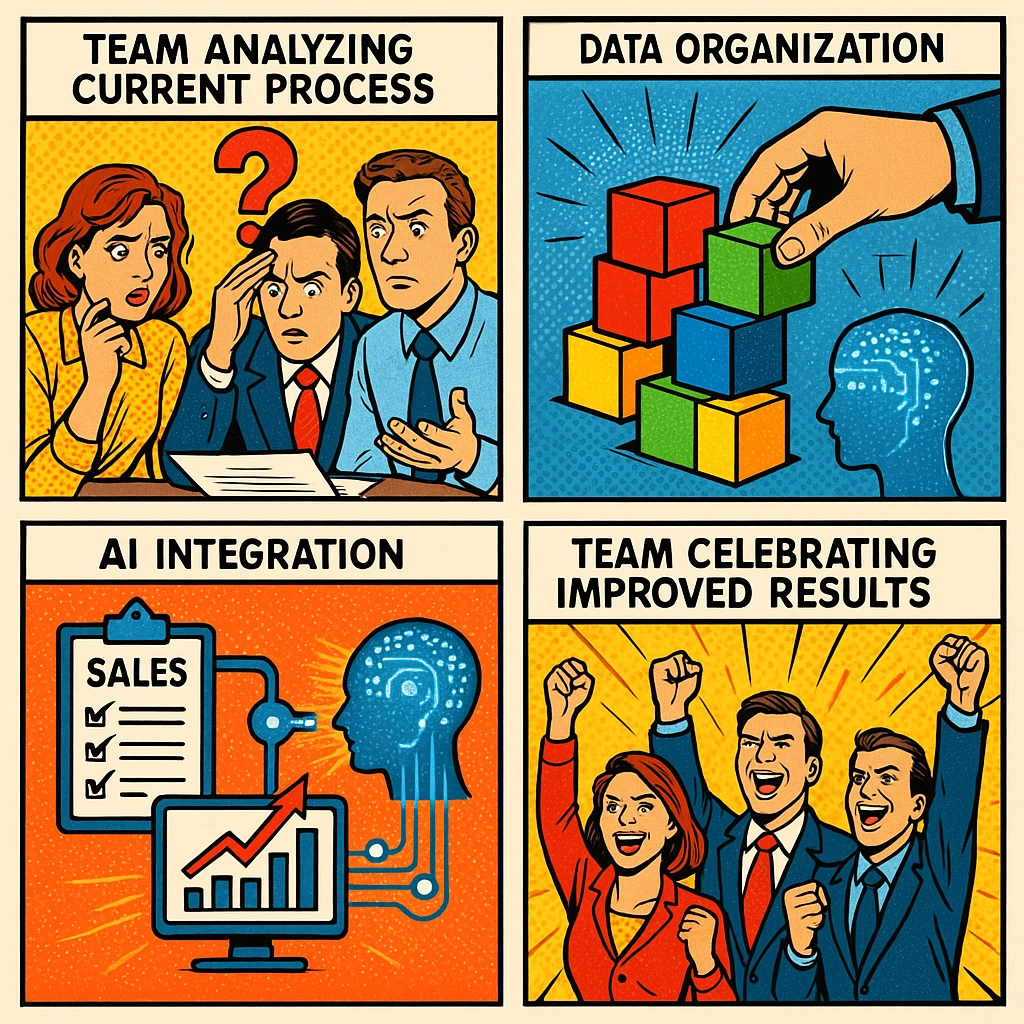In today's hyper-competitive business landscape, the difference between thriving and merely surviving often comes down to your sales pipeline. Yet most sales teams waste countless hours on manual prospecting that yields mediocre results. What if you could automate the tedious parts, personalize at scale, and focus only on the highest-potential leads?
AI-powered sales prospecting isn't just changing the game—it's creating an entirely new playing field where small teams can compete with industry giants. This comprehensive guide breaks down exactly how modern businesses are leveraging AI to transform their prospecting efforts and dramatically improve conversion rates.
The Sales Prospecting Revolution: Before vs. After AI
Traditional sales prospecting has always been a numbers game with diminishing returns. The more leads you chase, the more rejections you face, and the harder it becomes to maintain quality outreach.
"The old way of prospecting is dead. Today's buyers don't want to be hunted—they want to be understood. AI makes this understanding possible at scale."
Let's see how AI transforms each aspect of the prospecting process:
| Prospecting Activity | Without AI | With AI |
|---|---|---|
| Lead Identification | Manual research, gut feelings, time-consuming | Data-driven ICP matching, predictive targeting, instant |
| Lead Qualification | Basic scoring rubrics, surface-level analysis | Multi-signal evaluation, engagement patterns, real-time updates |
| Outreach Personalization | Templates with name insertion, generic content | Hyper-personalized messages based on digital footprint |
| Follow-up Management | Manual tracking, inconsistent timing | Automated, optimal timing based on engagement signals |
| Meeting Scheduling | Back-and-forth emails, timezone confusion | Instant availability matching, self-service booking |
| Performance Analysis | Lagging indicators, basic metrics | Predictive insights, continuous optimization |

Five Powerful Ways to Deploy AI in Your Prospecting Process
1. Refining Your Ideal Customer Profile (ICP)
Gone are the days of static, assumption-based ICPs. AI analyzes your customer data to identify hidden patterns that predict success:
- Purchase history and customer lifetime value correlations
- Engagement patterns that signal readiness to buy
- Industry-specific triggers that indicate opportunity windows
- Company growth indicators that align with your solution
At Marblism, we've seen companies completely transform their targeting after letting our AI Employee Stan (our AI Sales Rep) analyze their existing customer base. In one case, a client discovered a previously overlooked industry vertical that now generates 40% of their new business.
"The most valuable prospecting time you'll ever spend is ensuring you're targeting the right companies in the first place. AI doesn't just find you leads—it finds you the right leads."
2. Automating Lead Scoring and Qualification
The old binary qualified/unqualified system doesn't cut it anymore. Today's AI scoring systems create nuanced, multi-dimensional evaluations based on:
✓ Digital body language (website visits, content interactions)
✓ Engagement velocity (frequency and recency of interactions)
✓ Behavioral patterns matching those of your best customers
✓ Intent signals from across the web
✓ Firmographic and technographic alignment
These systems continually refine themselves, learning from which leads convert and which don't. This creates a virtuous cycle where your targeting improves automatically over time.
Stan, our AI Sales Representative, excels at this by continuously monitoring prospect signals and alerting your team when high-value opportunities emerge—even outside business hours.

3. Personalizing Outreach with AI
Generic templates yield generic results. AI enables personalization at a depth and scale previously impossible:
Content Personalization:
- Reference recent company news or achievements
- Mention specific pain points based on digital footprint
- Adjust technical complexity based on role
- Customize case studies to match prospect's industry
Timing Personalization:
- Optimal sending time based on past engagement
- Strategic follow-up scheduling
- Event-triggered outreach
Channel Personalization:
- Preferred communication platform
- Content format preferences
- Messaging style alignment
"In a world where everyone's inbox is overflowing, relevance isn't just nice to have—it's the only way to get noticed. AI is the difference between being seen and being scrolled past."
4. Automating Scheduling and Follow-ups
The typical sales sequence requires 8-12 touchpoints before conversion, yet most salespeople give up after just 2-3 attempts. AI ensures consistent, optimized follow-up by:
- Automatically sending perfectly timed follow-ups
- Adapting message content based on previous interactions
- Detecting out-of-office responses and rescheduling accordingly
- Managing meeting scheduling across multiple stakeholders
This automation eliminates the administrative burden that typically consumes 30-40% of a sales rep's day. Eva, our AI Executive Assistant, handles these tedious tasks flawlessly, freeing up your team to focus on relationship-building conversations instead.
5. Enhancing Both Inbound and Outbound Prospecting
AI-Powered Inbound Prospecting:
The key to effective inbound prospecting is speed and relevance. When someone shows interest, AI can:
□ Instantly engage website visitors with personalized chat
□ Score and route leads to the appropriate team member
□ Provide relevant resources based on browsing behavior
□ Qualify and book meetings 24/7
AI-Powered Outbound Prospecting:
For outbound efforts, AI transforms efficiency by:
□ Identifying net-new prospects matching your ICP
□ Crafting personalized cold outreach at scale
□ Testing and optimizing message effectiveness
□ Managing multi-channel campaigns (email, LinkedIn, phone)
Implementing AI in Your Sales Prospecting: A Practical Roadmap
Moving from traditional to AI-enhanced prospecting doesn't happen overnight. Here's a phased approach we recommend to our clients at Marblism:
Phase 1: Audit & Baseline (1-2 weeks)
- Document current prospecting workflow and pain points
- Establish baseline metrics (conversion rates, response rates, etc.)
- Identify highest-impact opportunities for AI integration
Phase 2: Data Foundation (2-4 weeks)
- Centralize and clean customer and prospect data
- Define success criteria and scoring rubrics
- Connect data sources for comprehensive view
Phase 3: Initial AI Deployment (4-6 weeks)
- Implement AI tools for highest-impact use cases
- Train team on new workflows
- Begin A/B testing against traditional methods
Phase 4: Optimization & Expansion (Ongoing)
- Analyze results and refine approach
- Gradually expand AI implementation
- Continuous learning and improvement

Choosing the Right AI Sales Prospecting Solution
When evaluating AI prospecting solutions, consider these critical factors:
- Integration capabilities: Does it work seamlessly with your existing CRM and sales tools?
- Data requirements: How much historical data is needed for effective operation?
- Customization flexibility: Can you adjust algorithms to match your specific business needs?
- Human-AI collaboration: Does it enhance your team's capabilities or try to replace them?
- Compliance and ethics: How does it handle data privacy and security concerns?
At Marblism, we've designed our AI Employees like Stan to work alongside your human team, augmenting their capabilities rather than replacing them. This collaborative approach yields the best results, combining AI efficiency with human relationship skills.
Common Challenges and Solutions
Even the best AI implementation can face hurdles. Here are solutions to the most common challenges:
Challenge: Sales team resistance to adoption
Solution: Start with small, high-impact use cases that demonstrate clear value. Have Penny, our AI Blog Writer, create internal case studies highlighting wins.
Challenge: Inconsistent or insufficient data
Solution: Begin with the data you have while implementing better collection processes. Most AI systems improve over time as data quality increases.
Challenge: Difficulty measuring ROI
Solution: Establish clear before/after metrics focused on both efficiency (time saved) and effectiveness (conversion rates, deal size).
The Future of AI in Sales Prospecting
While today's AI capabilities are impressive, we're just scratching the surface. The next generation of sales prospecting AI will feature:
- Predictive intent modeling that identifies prospects before they even know they need your solution
- Hyper-personalized video and multimedia content generated on demand
- Autonomous relationship nurturing across multiple channels
- Prescriptive guidance for complex sales scenarios
Taking the First Step
The gap between companies leveraging AI for prospecting and those still using traditional methods grows wider every quarter. The good news? Getting started doesn't require massive investment or technical expertise.
Begin by identifying one specific prospecting pain point—perhaps lead qualification or personalized outreach—and implement an AI solution focused on that challenge. Measure the results, learn from the process, and expand from there.
At Marblism, our AI Employees like Stan, Eva, Sonny, and Penny work together to create a comprehensive prospecting ecosystem that identifies, engages, and nurtures potential customers with minimal human intervention.
The future of sales prospecting isn't about replacing humans—it's about elevating them. By letting AI handle the repetitive tasks of identifying, qualifying, and engaging prospects, your team can focus on what humans do best: building relationships and solving complex problems.
The question isn't whether AI will transform sales prospecting—it's whether you'll be leading the transformation or playing catch-up with competitors who embraced it first.







